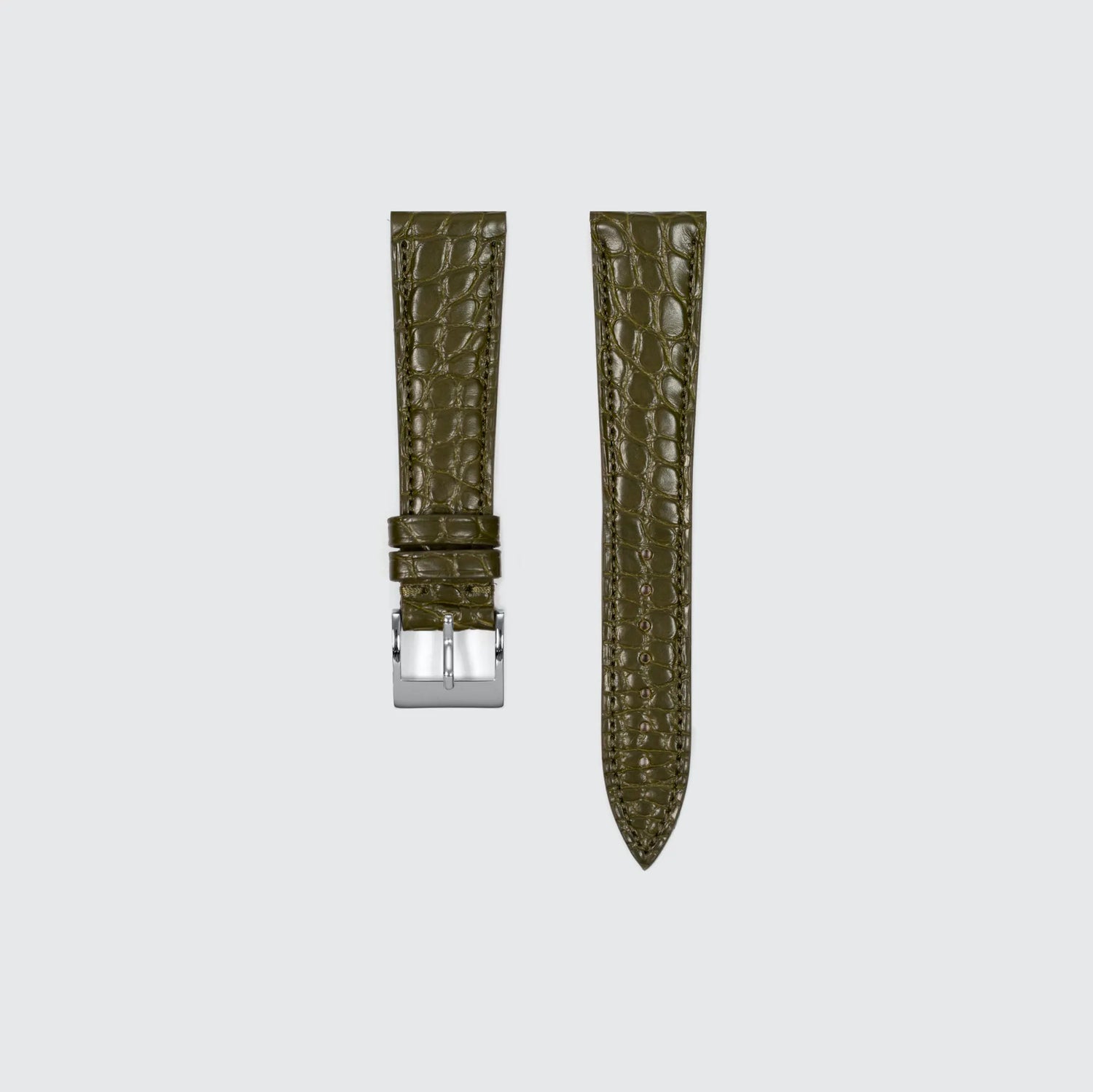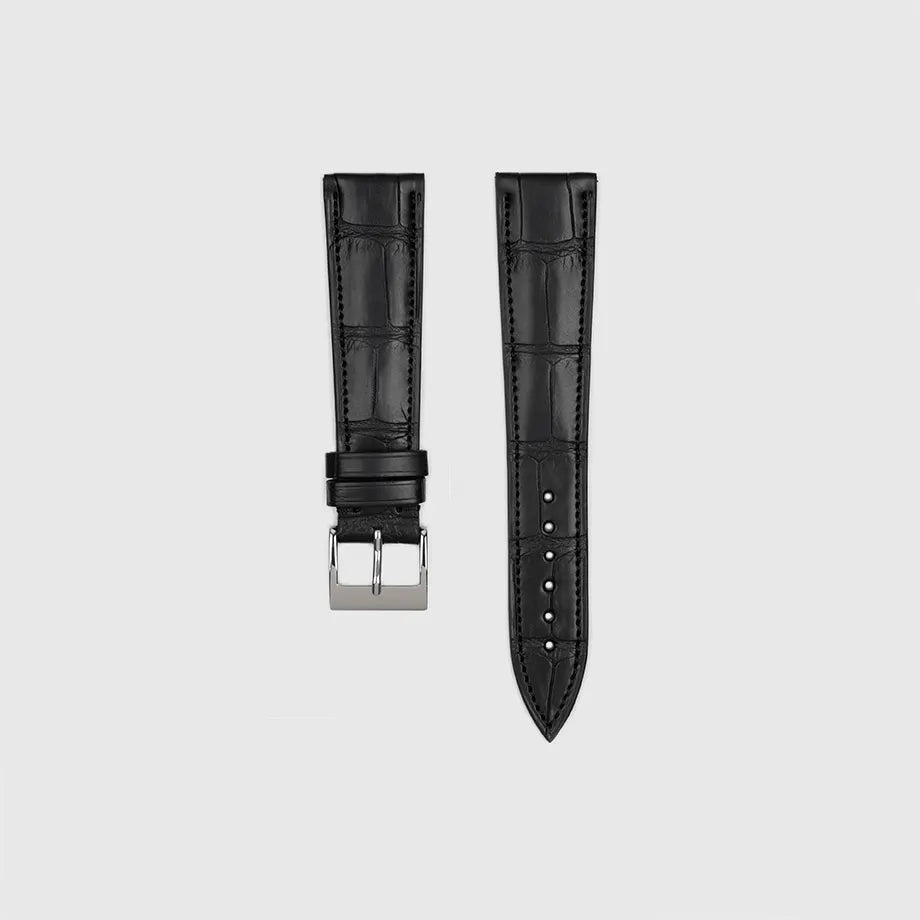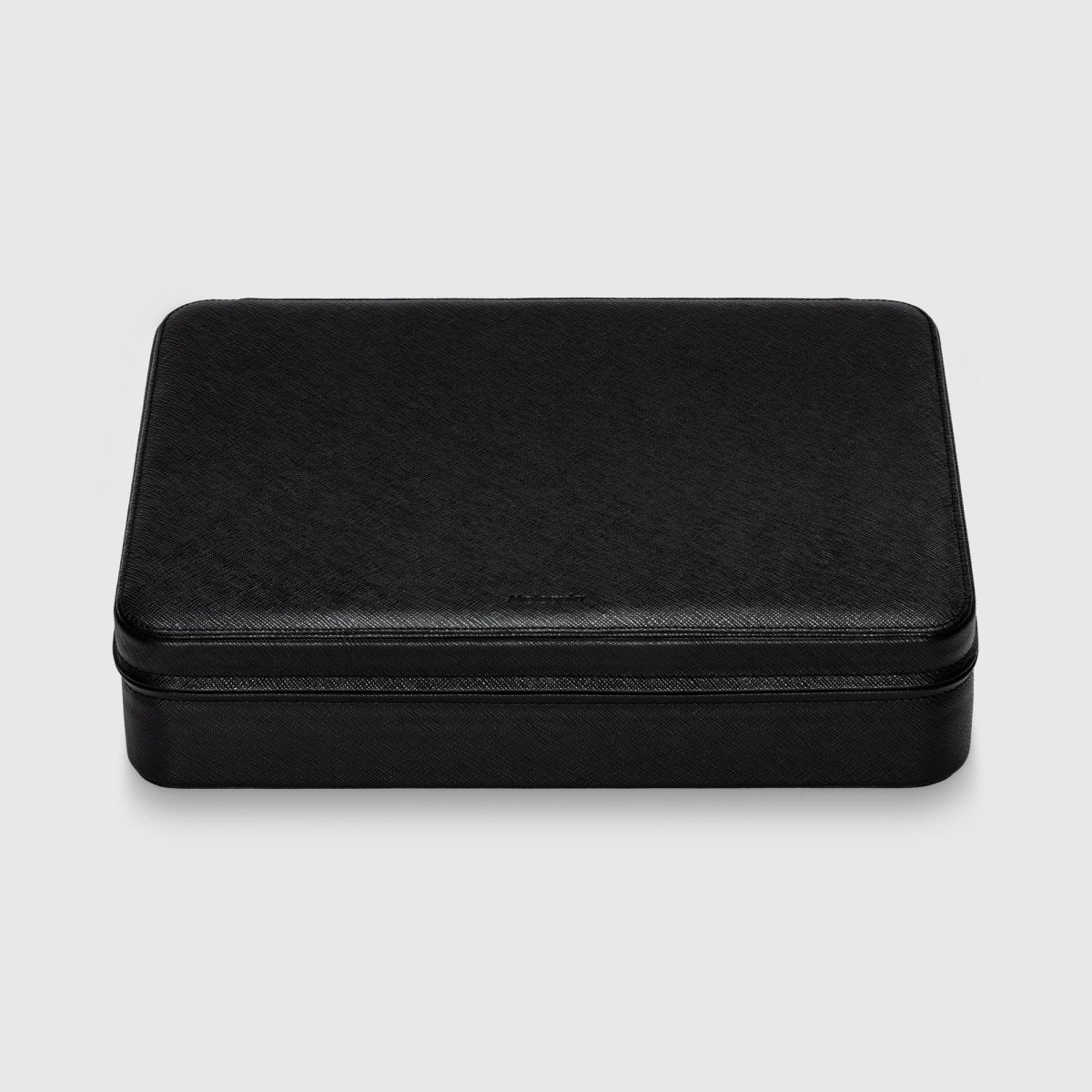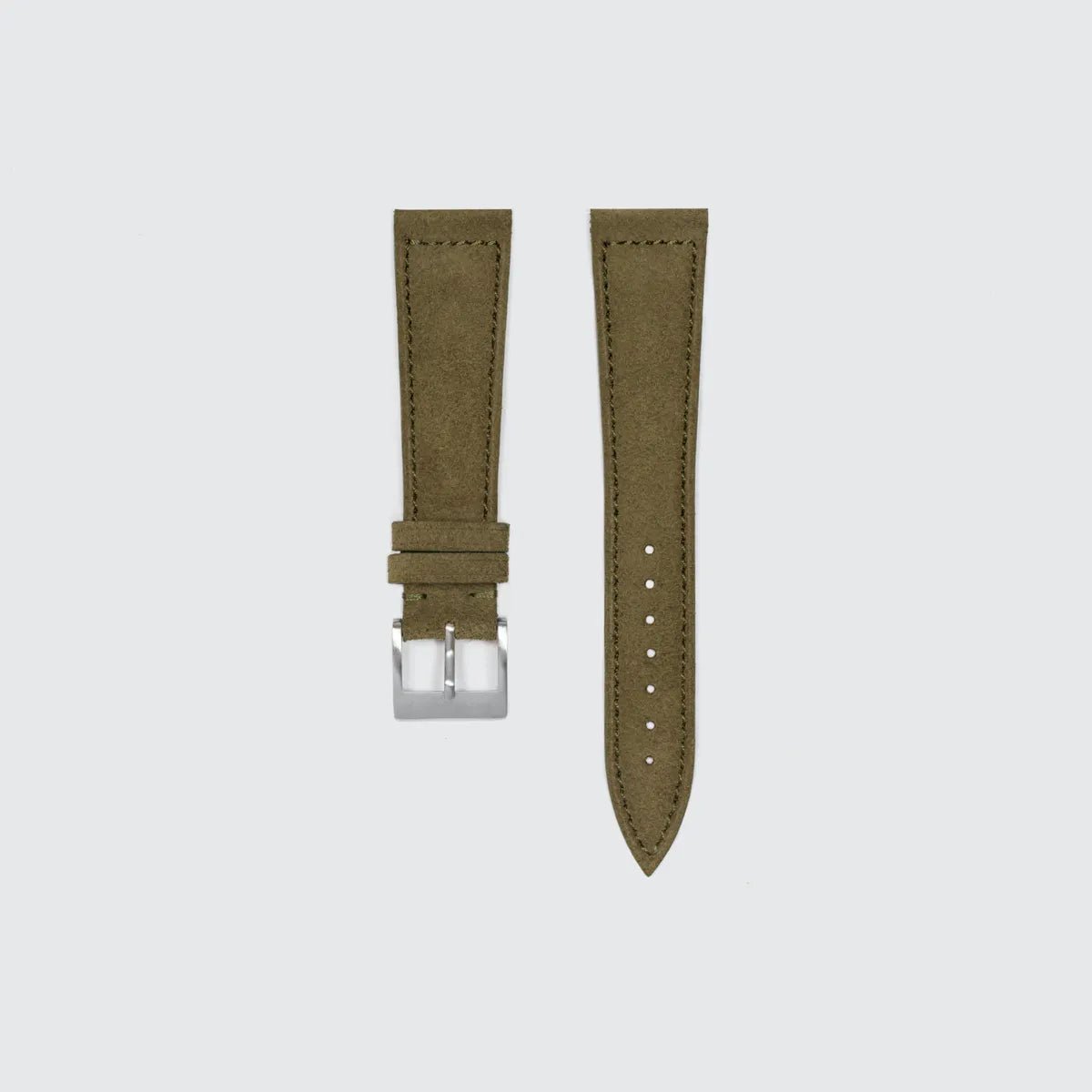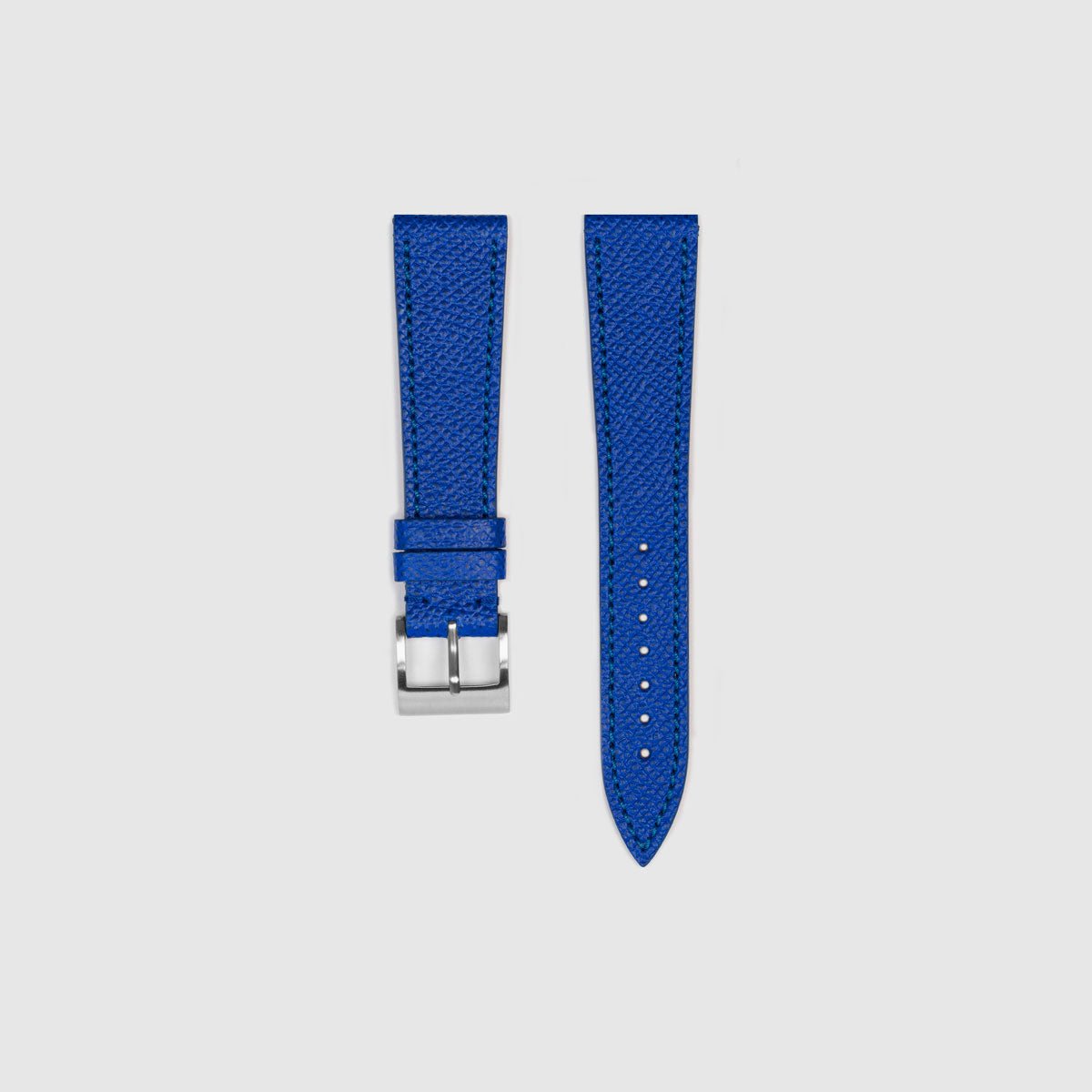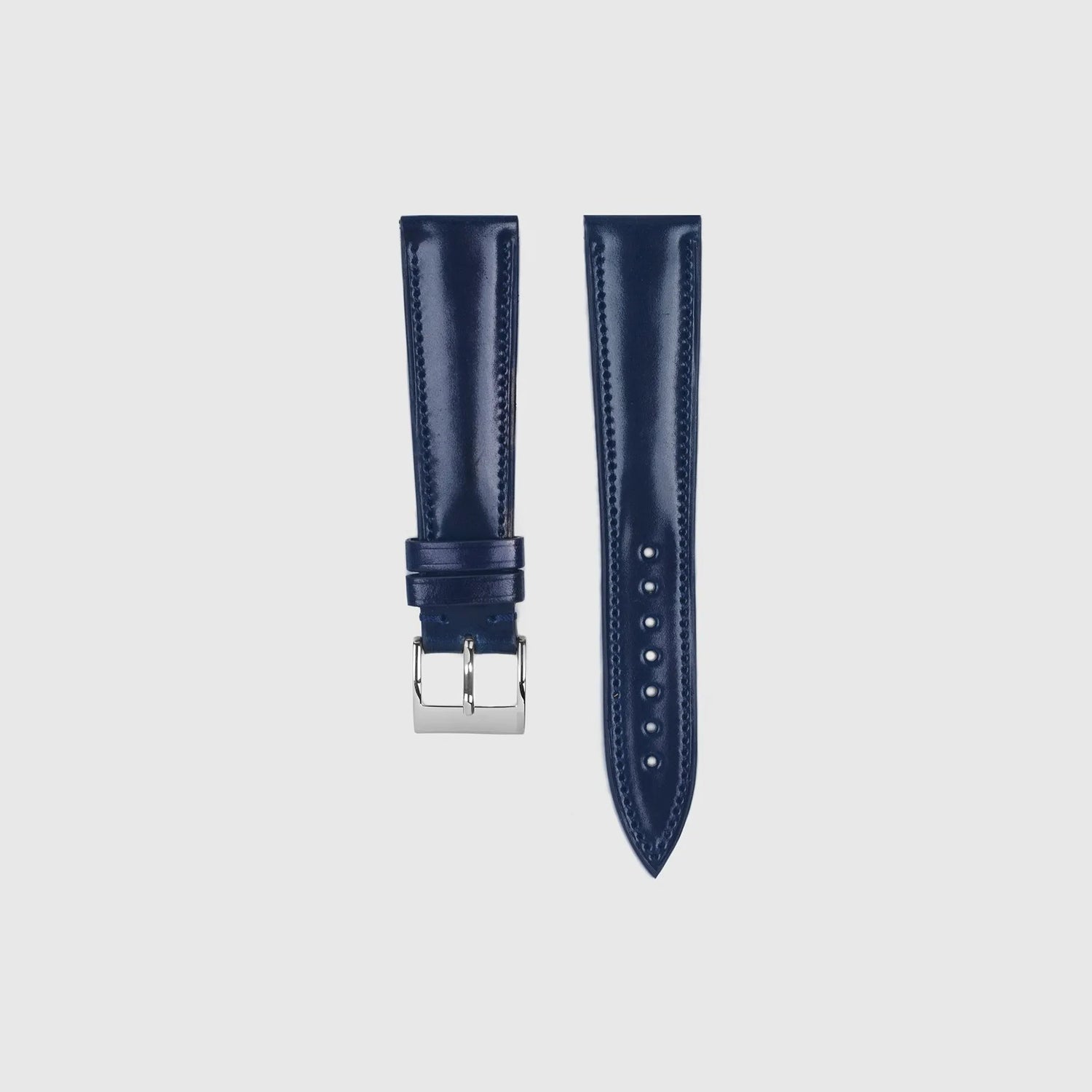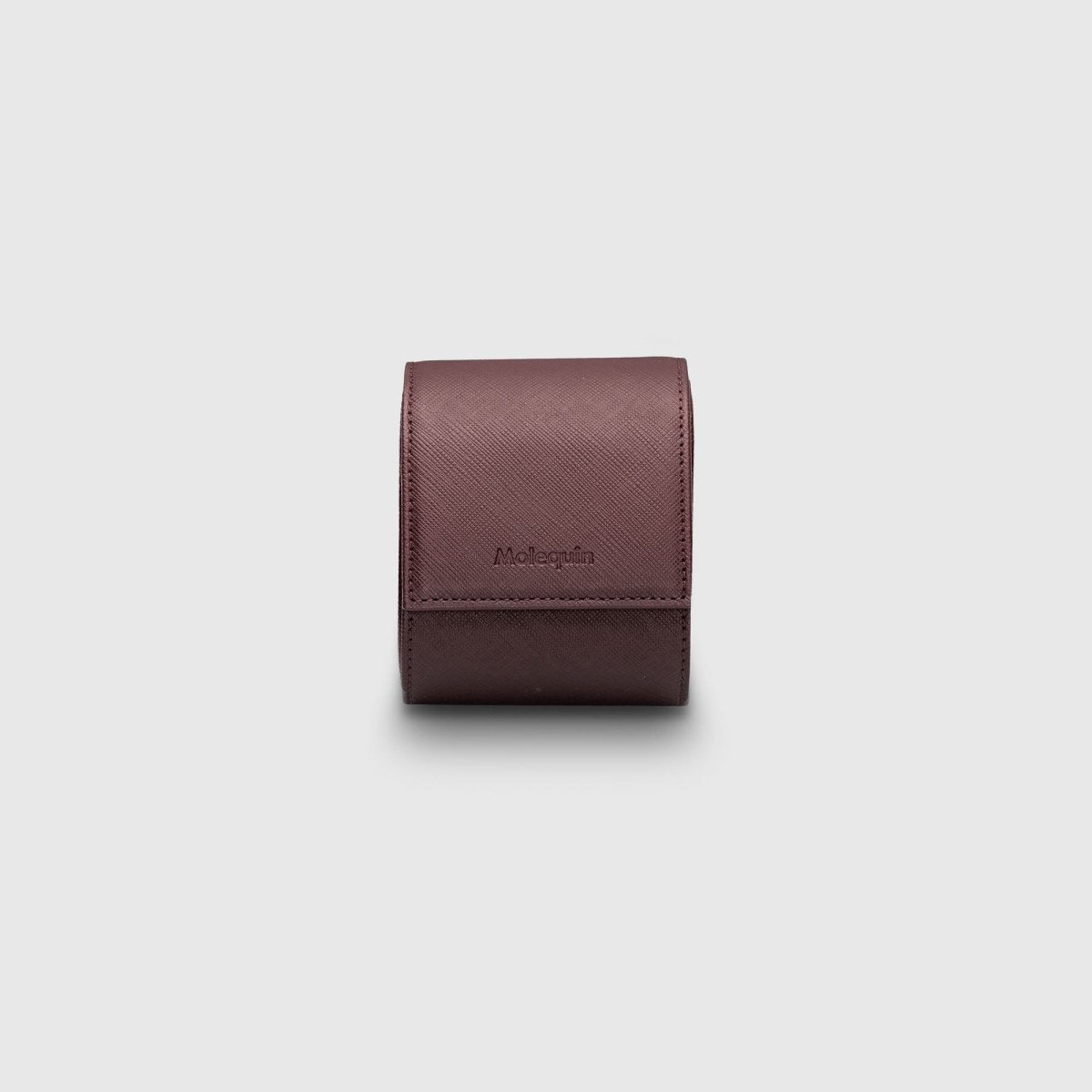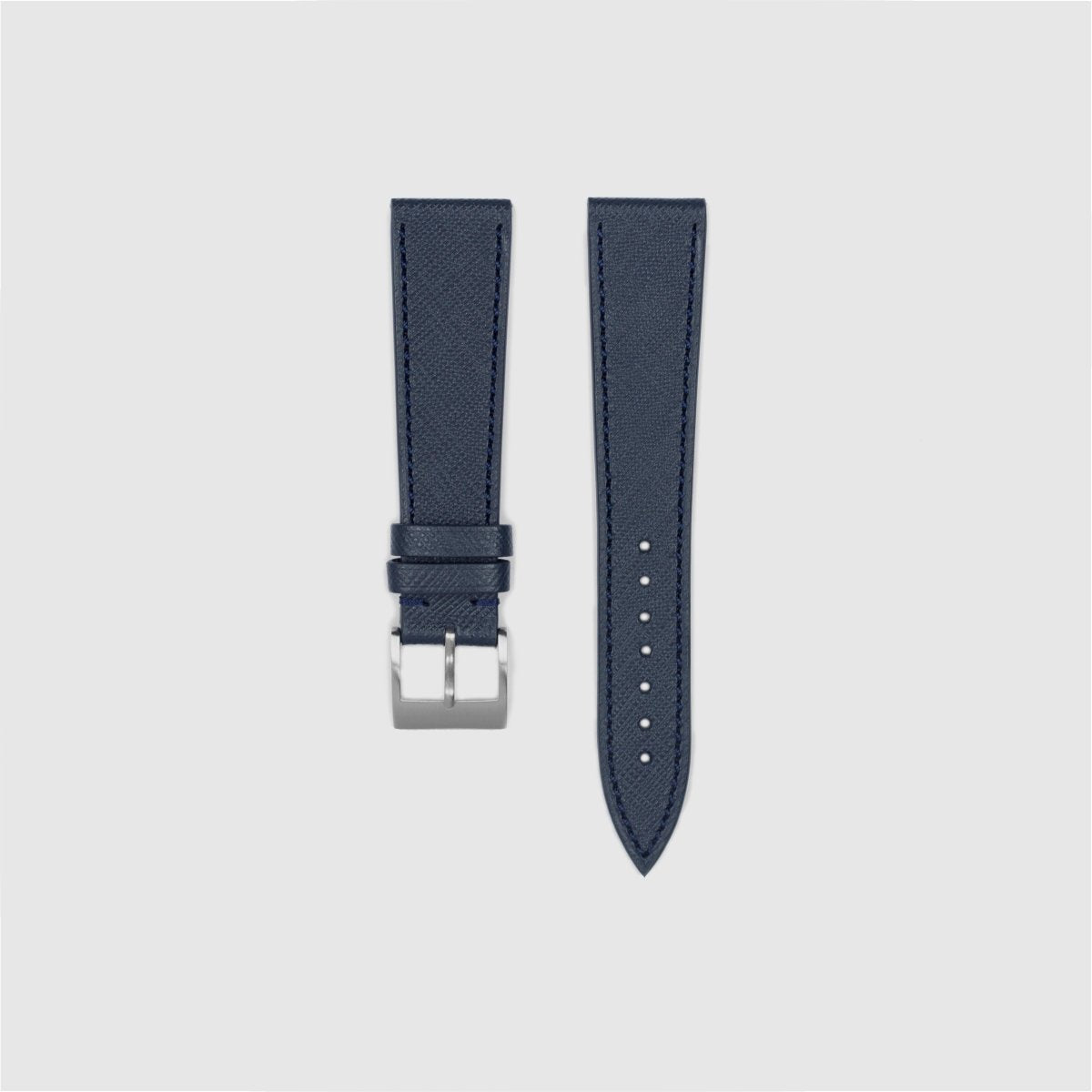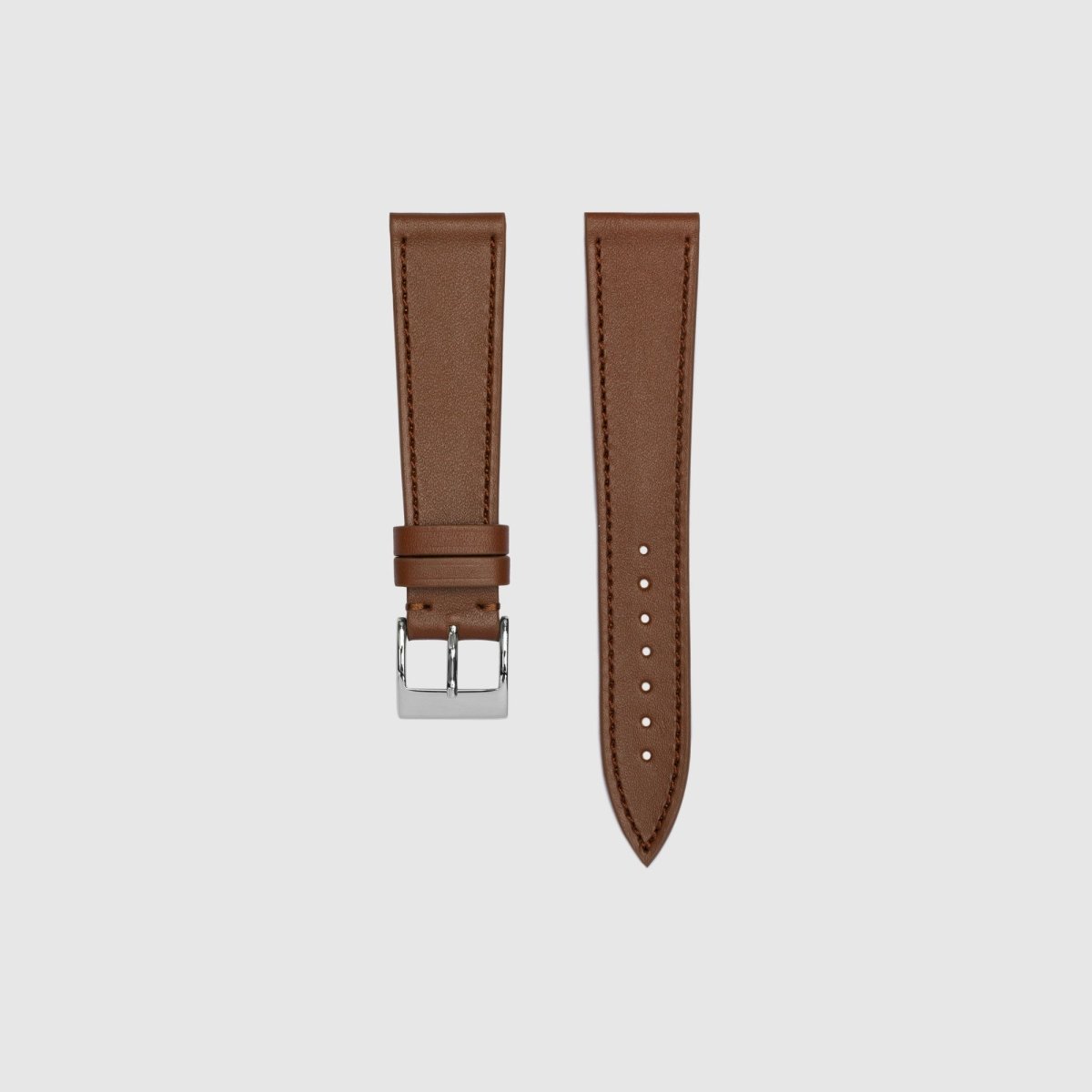Ever wonder why some watch straps cost three times more but feel worse than your trusty Saffiano? You're not going crazy. And you're definitely not alone in questioning those inflated price tags.
The leather industry loves throwing around fancy terms like "premium grade" and "luxury finish." But here's the thing: most of it is pure marketing fluff. After nearly a decade in the watch strap business and working with some of France's finest tanneries, I've learnt that the real story of leather quality isn't found in flashy branding or sky-high prices.
Today, we're pulling back the curtain on leather grading. We'll explore why Saffiano leather consistently outperforms more expensive alternatives. Plus, I'll give you the knowledge to spot genuine quality from a mile away. Spoiler alert: some of the most expensive straps out there are actually using inferior materials.
The Leather Grading System: What They Don't Want You to Know
Here's where things get interesting (and a bit infuriating).
The leather industry doesn't have a universal grading system like diamonds or precious metals. Instead, we're dealing with a hodgepodge of marketing terms that often mean absolutely nothing.
Most manufacturers use terms like "full grain," "top grain," and "genuine leather." But they apply them inconsistently. What one company calls "premium full grain" might be what another honestly labels as "corrected grain." It's like the Wild West out there, except instead of cowboys, we've got marketing departments running amok.
The reality? Leather quality depends on three critical factors:
- The animal's life conditions
- The tanning process
- The finishing techniques
Everything else is just noise designed to justify higher prices.
Common leather grades you'll encounter:
- Full grain (the outer skin with all natural markings intact)
- Top grain (full grain with surface corrections)
- Split grain (lower layers of the hide)
- Genuine leather (can literally be scraps glued together)
- Bonded leather (ground-up leather mixed with polyurethane – basically fake)
But here's the kicker: even "full grain" can be terrible if the source animal lived in poor conditions or the tanning process was rushed. Meanwhile, a well-processed top grain leather can outperform mediocre full grain every single time.
Why Saffiano Punches Above Its Weight Class
Saffiano leather gets overlooked by leather snobs. Frankly, that's their loss.
This isn't some trendy newcomer – it's been around since 1913 when Prada first developed it. The genius lies in its construction method, not just the base material.
The cross-hatch pattern isn't just for looks. It's created through specialised pressing that compresses the leather fibres, making them incredibly dense and resilient. Think of it like forging metal – you're taking good material and making it exponentially stronger through the manufacturing process.
Our Military Green Saffiano strap exemplifies this perfectly. We start with premium French calf leather – already excellent material – then apply the Saffiano treatment in our atelier.
The result? A strap that maintains its appearance longer than many full grain leathers costing twice as much.
What makes Saffiano exceptional:
- Scratch resistance that puts most "luxury" leathers to shame
- Water resistance without chemical treatments that can break down over time
- Consistent texture that doesn't develop ugly wear patterns
- Durability that actually improves with age rather than deteriorating
I've seen customers compare their Molequin Saffiano straps to €300+ alternatives from Swiss brands. Honestly? The Saffiano consistently looks better after six months of daily wear. That's not brand loyalty talking – that's just physics.
The €300 Leather Strap Scam (Yes, Really)
Let's talk about those eye-watering price tags.
Some Swiss watch brands charge €300+ for leather straps that, frankly, aren't worth half that amount. I've examined dozens of these "premium" straps, and the markups are genuinely shocking.
Many expensive straps use corrected grain leather. This means the surface has been sanded down to remove imperfections, then artificially textured and coloured. It looks fancy in the boutique, but it's actually lower quality than honest top grain leather. Yet they'll charge you three times more because of the brand name on the buckle.
The worst offenders? Those straps that feel stiff and plasticky.
They've usually been over-treated with chemicals to achieve a specific look, sacrificing long-term durability for short-term aesthetics. Give it six months, and that €300 investment starts cracking at the edges whilst your Oxford Blue Saffiano strap still looks pristine.
Red flags to watch for in overpriced straps:
- Perfectly uniform grain (probably corrected or embossed)
- Chemical smell that doesn't fade after a week
- Stiffness that doesn't improve with wear
- Edge paint that chips easily
- Unrealistic claims about "rare" leather sources
Here's a reality check: genuine crocodile leather costs about €50-80 per strap in raw materials. Everything beyond that is markup, brand tax, and retail overhead. When you see a €400 crocodile strap, you're mostly paying for the name, not superior materials.
The French Advantage: Why Location Matters
Not all leather is created equal. Geography plays a huge role.
French tanneries have been perfecting their craft for centuries, developing techniques that simply can't be replicated in mass-production facilities.
The climate matters more than most people realise. France's moderate humidity and temperature create ideal conditions for slow, controlled leather processing. Contrast this with facilities in extremely hot or dry climates, where leather must be processed quickly to prevent spoilage. That rushed process shows up in the final product as inconsistent quality and premature ageing.
Our leather comes from tanneries that have been family-owned for generations. These aren't industrial operations churning out thousands of hides per day – they're artisanal facilities where each batch gets personal attention.
The difference is immediately apparent when you handle the finished product.
Why French leather processing excels:
- Traditional vegetable tanning methods that take weeks instead of days
- Climate-controlled environments that prevent stress on the leather
- Generational knowledge passed down through families
- Smaller batches that allow for quality control at every stage
- Access to high-quality European cattle raised specifically for leather
When I visit our tannery partners, I can literally smell the difference. Industrial leather processing has a harsh chemical odour that never quite disappears. Traditional French tanning smells earthy and rich – like quality should smell.
Spotting Quality: Your Field Guide to Genuine Leather Excellence
Forget everything the marketing departments want you to believe.
Real leather quality assessment comes down to a few simple tests you can do in any store (or from your sofa if you're shopping online).
The hand test is your best friend. Quality leather should feel supple but substantial. It shouldn't be paper-thin (that's cheap) or board-stiff (that's over-processed). It should have just enough give to suggest it'll conform to your wrist over time.
Our St. Émilion Saffiano strap exemplifies this perfect balance – substantial enough to feel premium, flexible enough for immediate comfort.
Look at the edges carefully. This is where cheap straps reveal themselves fastest. Quality manufacturers finish the edges properly, often with multiple coats of edge paint that's sanded smooth between applications. Cheap straps have rough, poorly finished edges that'll start peeling within weeks.
Signs of genuine quality leather:
- Natural variation in grain pattern (too perfect = artificial)
- Subtle leather aroma that's pleasant, not chemical
- Edges that are smooth and properly finished
- Stitching that's perfectly straight with consistent tension
- Flexibility that improves with handling, not stiffness that never changes
- Price that reflects actual materials and craftsmanship, not brand markup
Here's a pro tip: Gently flex the strap near the buckle. Quality leather will crease naturally and bounce back. Cheap leather will show stress marks or crack. Overly stiff leather won't flex properly at all.
The Saffiano Secret: Engineering Meets Tradition
What most people don't understand about Saffiano is that it's essentially engineered leather.
We're taking excellent base material and enhancing its properties through controlled mechanical processes. It's tradition meeting innovation – the best of both worlds.
The cross-hatch pattern does more than look sophisticated. Each intersection in the pattern creates a stress distribution point. When the strap flexes, forces spread across thousands of these tiny points instead of concentrating in one area. It's like the difference between a suspension bridge and a simple beam – better engineering for better performance.
This is why our Midnight Black Saffiano strap can handle daily wear that would destroy other straps. The pattern isn't decorative – it's functional engineering disguised as elegant design.
Technical advantages of the Saffiano process:
- Force distribution prevents stress concentration and cracking
- Surface compression increases density and durability
- Consistent thickness eliminates weak points
- Reduced porosity improves stain and water resistance
- Controlled grain pattern ensures consistent ageing
I've watched customers switch from €250+ Swiss brand straps to our Saffiano offerings and never look back. The performance difference isn't subtle – it's immediately obvious to anyone who wears their watch daily.
Breaking the Price-Quality Myth
Here's the uncomfortable truth: above a certain point, you're paying for marketing, not materials.
A €105 Saffiano strap from a manufacturer focussed on quality can easily outperform a €300 strap from a brand more interested in profit margins than craftsmanship.
The sweet spot for genuine leather quality is typically €80-150. Below that, corners get cut on materials or construction. Above €200, you're usually paying brand tax rather than getting proportionally better quality. There are exceptions, but they're rare.
Consider this: our Beurre Caramel Saffiano strap at €105 uses the same French leather and construction techniques as straps costing three times more.
The difference? We're not paying for massive marketing budgets, celebrity endorsements, or inflated retail markups.
The real cost breakdown of a quality leather strap:
- Raw materials: €25-40
- Skilled craftsmanship: €20-35
- Quality control and finishing: €15-25
- Reasonable business overhead: €20-30
- Fair profit margin: €15-25
Everything beyond that total is markup that doesn't improve the product. When you see a €400 leather strap, ask yourself what you're really paying for.
Your Watch Deserves Better (And So Do You)
The watch industry has conditioned us to equate price with quality. But leather is one area where that correlation breaks down completely.
A well-made Saffiano strap will outlast and outperform many alternatives costing twice as much.
Quality isn't about spending more – it's about spending smarter. Understanding what actually makes leather good versus what makes it expensive puts you in control of your purchasing decisions. You stop being a target for marketing manipulation and start being an informed consumer.
Your timepiece represents precision engineering and careful craftsmanship. Shouldn't the strap holding it reflect those same values?
Whether you choose our Oxford Blue for its versatility or Military Green strap for its unique character, you're investing in proven quality rather than paying brand tax.
The next time someone tries to convince you that more expensive automatically means better, remember this: the best leather strap is the one that performs excellently day after day, year after year.
Price tags can't change physics. Marketing can't improve materials.
Smart collectors know that true luxury isn't about what you spend – it's about what you get. And sometimes, that means choosing the €105 strap that outperforms everything else in your collection.
